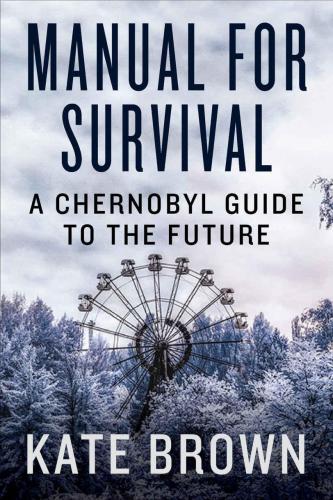
Manual for Survival
An Environmental History of the Chernobyl Disaster
کتاب های مرتبط
- اطلاعات
- نقد و بررسی
- دیدگاه کاربران
نقد و بررسی

November 1, 2018
Chernobyl's impact was both localized and minimal, right? Wrong, argues Brown, who draws on a decade of research in Ukraine, Russia, and Belarus to argue that there were likely hundreds of thousands of casualties, from birth defects to cancer, and that not just the Soviets but anxious diplomats and scientists in the West downplayed Chernobyl's dangers lest citizens of the world question the consequences of Cold War nuclear weapons testing. Brown's 2013 Plutopia received no fewer than seven scholarly awards.
Copyright 2018 Library Journal, LLC Used with permission.

February 1, 2019
An award-winning historian challenges the notion that the 1986 Chernobyl nuclear accident had few consequences, arguing that the "public health disaster" killed at least 35,000 to 150,000 people and left most adults and children in affected areas sick with cancer, anemia, and other illnesses.In this explosive, exquisitely researched account, Brown (Environmental and Nuclear History/Univ. of Maryland, Baltimore County; Plutopia: Nuclear Families in Atomic Cities and the Great Soviet and American Plutonium Disasters, 2013, etc.) draws on four years of fieldwork in Soviet and other archives--27 total, some previously unvisited--and in towns and farms in contaminated territories to provide a powerful story of the devastating health and environmental effects of radioactive fallout in areas outside the 30-kilometer Chernobyl Exclusion Zone. "The accounts of unspecific, widespread, and chronic illness, reproductive problems, and acute increases in cancer resound like a lament across the area of Chernobyl fallout," she writes. The official death toll from the exploding nuclear power plant was 54, but there was never any long-term study of health consequences, including the effects of exposure to radiation over time. After interviewing workers, evacuees, and scientists; visiting affected factories, swamp ecosystems, and abandoned towns; and examining transcripts of secret Politburo meetings and other documents, the author concludes that Soviet officials hid the radiation's impact through "secrecy, censorship, counterespionage, and fabricated news." In the face of Soviet "half-truths and bald-faced lies," international scientists nodded agreeably. Like the Soviets, Western officials blamed stress--not radiation--for health issues, out of fear of Chernobyl's implications for other radiation exposures and possible lawsuits. Brown's prose is sometimes technical but largely accessible and even turns poetic when she describes changed lives. She offers horrifying descriptions of the processing of radioactive meat and other foods for shipment to large cities and towns and of the continuing sale abroad of contaminated berries.This sobering book should be read--and studied--by policymakers and citizens; pair with Adam Higginbotham's Midnight in Chernobyl to spark a renewed debate over nuclear power.
COPYRIGHT(2019) Kirkus Reviews, ALL RIGHTS RESERVED.

























دیدگاه کاربران